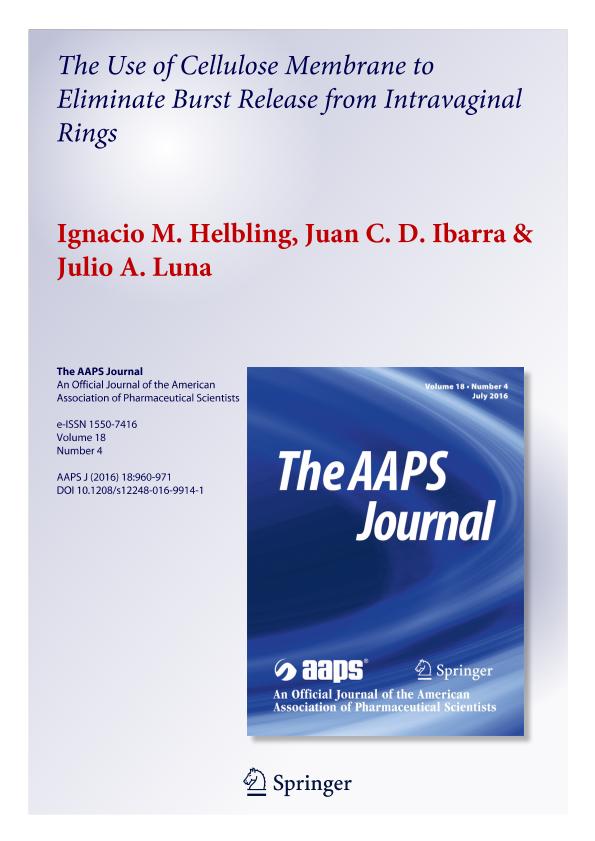Artículo
The Use of Cellulose Membrane to Eliminate Burst Release from Intravaginal Rings
Fecha de publicación:
04/2016
Editorial:
Springer
Revista:
Aaps Journal
ISSN:
1550-7416
Idioma:
Inglés
Tipo de recurso:
Artículo publicado
Clasificación temática:
Resumen
Burst release was observed when ethylene vinyl acetate copolymer (EVA) intravaginal rings were tested for progesterone release in our previous work (Helbling et al. Pharm Res. 31(3):795–808, 2014). Burst release is undesirable in controlled delivery devices because release is uncontrollable and higher levels of active pharmaceutical ingredient could lead to the occurrence of adverse effect. The present contribution is about the use of membranes to coat EVA rings to eliminate burst release. Physicochemical state of progesterone in uncoated rings and the solubility and diffusion coefficient in membrane were studied. Hormone delivery from several rings of different sizes was compared. A mathematical model was used to analyze the effects of membrane properties on delivery rate. No chemical interactions were detected between hormone and polymer. Hormone was mainly forming amorphous aggregates inside rings, and migration to membrane was not observed during storage. Diffusion coefficient was smaller in membrane (~10-8 cm2 s-1) than in matrix (~10-7 cm2 s-1). Zero-order release kinetics were obtained for coated rings, and release rate decreases as the thickness of the coat increases. Cellulose membrane successfully eliminates burst release and controls the delivery from EVA rings. The equations developed can be used to determine the appropriate coat thickness to produce specific release rate.
Archivos asociados
Licencia
Identificadores
Colecciones
Articulos(INTEC)
Articulos de INST.DE DES.TECNOL.PARA LA IND.QUIMICA (I)
Articulos de INST.DE DES.TECNOL.PARA LA IND.QUIMICA (I)
Citación
Helbling, Ignacio Marcelo; Ibarra, Juan Carlos Daniel; Luna, Julio Alberto; The Use of Cellulose Membrane to Eliminate Burst Release from Intravaginal Rings; Springer; Aaps Journal; 18; 4; 4-2016; 960-971
Compartir
Altmétricas




